Product Overview
The Delta-Q QuiQ 48 Volt Charger is a high-efficiency, programmable battery charger designed for lead-acid batteries, offering optimized charge algorithms and reliable performance in various applications.
1.1 Key Features of the Delta-Q QuiQ 48 Volt Charger
The Delta-Q QuiQ 48 Volt Charger is a high-performance, programmable battery charger designed for lead-acid batteries. It features a maximum output of 1200W at 48V, with a current rating of up to 18A. The charger includes advanced charge algorithms optimized for flooded, AGM, and gel batteries, ensuring safe and efficient charging. Its intelligent microprocessor allows for programmable charge profiles, storing up to 10 optimized algorithms. The charger is compact, lightweight, and designed for durability, making it suitable for industrial and electric vehicle applications. It also includes safety features like overcharge protection, thermal management, and fault detection. The QuiQ 48 Volt Charger supports a wide input voltage range and is compatible with both 110V and 230V AC power sources, offering flexibility for global use.
1.2 Applications of the Delta-Q QuiQ 48 Volt Charger
The Delta-Q QuiQ 48 Volt Charger is ideal for various industrial and electric vehicle applications, including forklifts, pallet trucks, and aerial lifts. Its high efficiency and programmable charge profiles make it suitable for golf carts, scooters, and other small electric vehicles. The charger is also used in renewable energy systems and remote power applications, where reliable battery charging is essential. Its compact design and durability make it a preferred choice for heavy-duty equipment and harsh environments. Additionally, the charger is compatible with lead-acid batteries, making it a versatile solution for industries requiring efficient and safe battery management; Its wide input voltage range further enhances its suitability for global installations and diverse power systems.
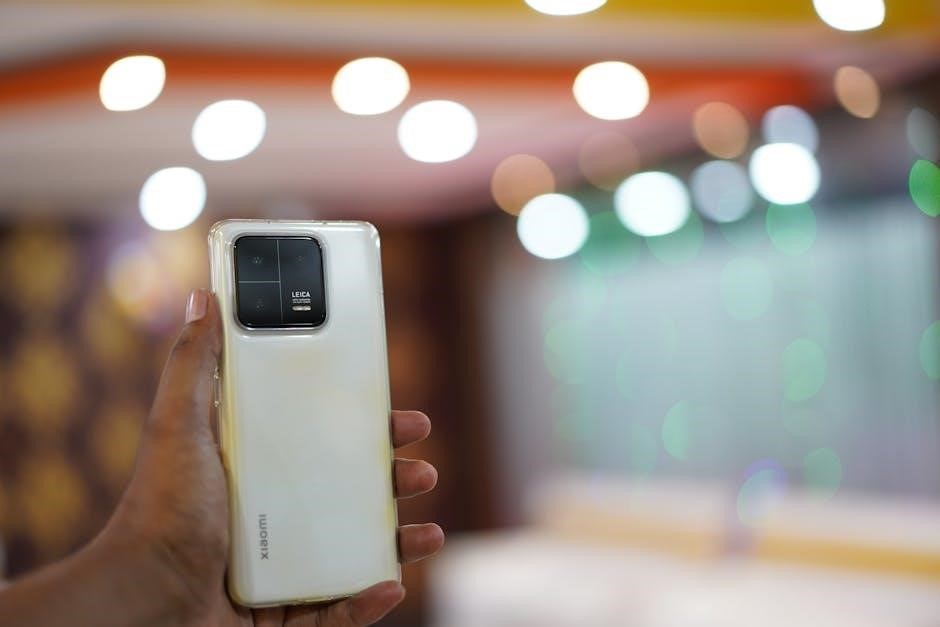
Technical Specifications
The Delta-Q QuiQ 48 Volt Charger operates at 48V with a maximum current of 18A, designed for lead-acid batteries. It features a wide input voltage range, intelligent microprocessor control, and optimized charge profiles for efficient battery management.
2.1 Voltage and Current Ratings
The Delta-Q QuiQ 48 Volt Charger is designed to operate at a nominal 48V DC output voltage, with a maximum output current of 18A. The charger supports a wide input voltage range of 110V AC to 230V AC, ensuring compatibility with various power sources. It features a high-efficiency design, typically exceeding 90% efficiency at full load, making it an energy-conscious choice. The output voltage is regulated to ensure precise charging, while the current is adjustable to suit different battery types and sizes. The charger is optimized for lead-acid batteries, including flooded, AGM, and gel types, and can deliver a maximum power output of 864W (48V x 18A). These ratings ensure reliable and efficient charging across a range of applications, from industrial equipment to electric vehicles.
2.2 Compatibility with Lead-Acid Batteries
The Delta-Q QuiQ 48 Volt Charger is specifically designed for use with lead-acid batteries, including flooded, AGM, and gel types. It features optimized charge algorithms that ensure safe and efficient charging for these battery chemistries. The charger’s intelligent microprocessor controller allows for customizable charge profiles, which can be tailored to the specific requirements of different lead-acid batteries. This ensures that the charging process is both effective and gentle on the battery, extending its lifespan. Additionally, the charger monitors critical parameters such as voltage and temperature to prevent overcharging and maintain battery health. Its compatibility with lead-acid batteries makes it an ideal solution for applications like electric vehicles, industrial equipment, and renewable energy systems where reliable battery performance is crucial.
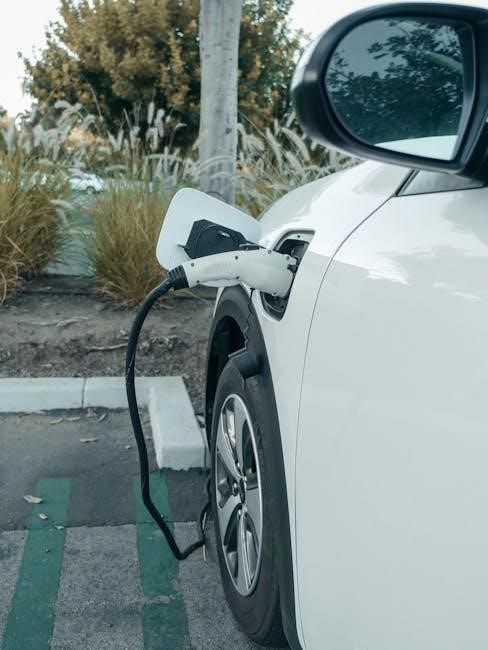
Safety Instructions
Always wear protective gear and ensure the Delta-Q QuiQ 48 Volt Charger is properly grounded. Avoid overcharging and keep the area well-ventilated during operation;
3.1 General Safety Precautions
When using the Delta-Q QuiQ 48 Volt Charger, always wear protective gear, including gloves and safety glasses. Ensure the charger is installed in a well-ventilated area, away from flammable materials. Avoid overcharging, as it may cause battery damage or safety hazards. Keep the charger out of reach of children and unauthorized personnel. Regularly inspect the charger and cables for signs of wear or damage. Never modify the charger or batteries, as this can lead to malfunction. Follow all instructions in the manual carefully and ensure proper grounding to prevent electrical shock. If unsure about any procedure, consult a qualified technician or contact Delta-Q support.
3.2 Specific Safety Warnings for the 48V Charger
For the Delta-Q QuiQ 48 Volt Charger, ensure the battery voltage does not exceed 2.5V per cell before charging. Avoid connecting the charger to a single 15A/20A circuit with other devices to prevent overload. The charger may become hot during operation; avoid touching it. Do not charge non-activated lithium-ion batteries, as this can cause irreversible damage. If a fault occurs and does not clear after ensuring the battery voltage is below 2.5V per cell, contact Delta-Q support. Never charge in explosive environments or near open flames. Always use the correct input voltage (110V, 220V, or 230V AC) and proper cord sets to avoid electrical hazards. Properly dispose of the charger at the end of its life cycle, following local regulations.

Installation Guide
The Delta-Q QuiQ 48 Volt Charger installation involves connecting to a 110V/220V AC source, ensuring proper wiring, and securing the unit in a well-ventilated area.
4.1 Pre-Installation Checks
Before installing the Delta-Q QuiQ 48 Volt Charger, ensure the AC input voltage matches the specified 110V or 220V. Verify the charger is rated for your battery type and capacity. Inspect the unit for damage and ensure all components, including the power cord and connectors, are in good condition. Check the environment for proper ventilation and protection from moisture. Ensure the circuit breaker or fuse box can handle the charger’s power requirements. Review the manual for specific guidelines and safety precautions. Finally, confirm compatibility with your electrical system to avoid any installation issues. Proper preparation ensures safe and efficient charging.
4.2 Step-by-Step Installation Process
- Connect the AC input to a compatible power source, ensuring the voltage matches the charger’s rating (110V or 220V).
- Attach the DC output cables to the battery terminals, ensuring correct polarity (positive to positive, negative to negative).
- Secure the charger to a stable surface using mounting hardware provided or recommended in the manual.
- Connect the ground wire to a suitable grounding point to ensure electrical safety.
- Turn on the power and verify the charger’s status indicators show normal operation.
- Refer to the manual for any additional configuration or settings required for your specific battery type.
Ensure all connections are secure and double-check the setup before use.

Operating Instructions
Begin with initial setup, selecting the appropriate charge profile for your battery type. Monitor the charging process, ensuring all safety guidelines are followed. Refer to the manual for detailed steps and troubleshooting tips.
5.1 Initial Setup and Configuration
Begin by connecting the Delta-Q QuiQ 48 Volt Charger to a compatible 48V lead-acid battery. Ensure the charger is placed in a well-ventilated area, away from flammable materials. Connect the DC output cables to the battery terminals, matching the polarity (positive to positive, negative to negative). Plug in the charger to a suitable AC power source, ensuring the voltage matches your region’s standard (120V or 230V AC). Use the charger’s microprocessor to select a pre-programmed charge profile suitable for your battery type (flooded, AGM, or gel). Refer to the manual for specific profile selections. Perform a final check to ensure all connections are secure and the charger is ready for operation. Always follow the manual’s guidelines for safe and efficient charging. Proper configuration ensures optimal battery performance and longevity.
5.2 Charging Procedures and Best Practices
Before charging, ensure the Delta-Q QuiQ 48 Volt Charger is properly configured for your battery type. Begin by connecting the charger to the battery, following the polarity guidelines. Once connected, the charger will automatically detect the battery voltage and select the appropriate charge profile. Monitor the charging process using the charger’s indicators or connected devices. Avoid overcharging by allowing the charger to complete its full cycle, as it is designed to transition to a float mode once the battery is fully charged. Keep the charger in a well-ventilated area to prevent overheating. Regularly inspect the connections for cleanliness and tightness. After charging, disconnect the charger from the AC power source before removing the DC cables from the battery. Always refer to the manual for specific charging recommendations tailored to your battery type.
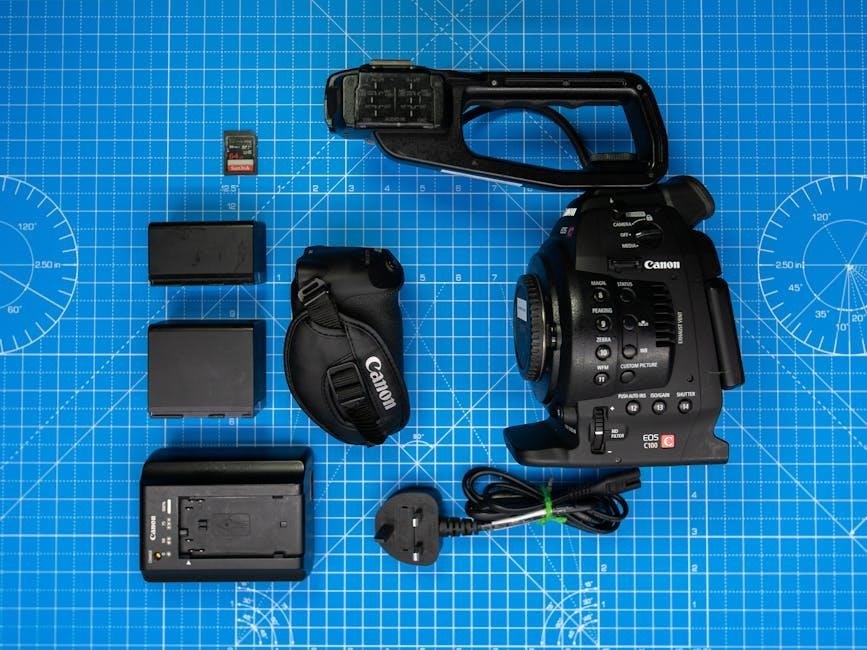
Maintenance and Troubleshooting
Regularly inspect connections, ensure proper ventilation, and update software. For issues, check error codes, verify battery connections, and ensure the charger is not overheating.
6.1 Regular Maintenance Tips
To ensure optimal performance of the Delta-Q QuiQ 48 Volt Charger, perform regular maintenance. Check all electrical connections for tightness and cleanliness to prevent poor conductivity. Inspect the charger’s vents for dust or debris buildup, which can impede cooling. Use a soft brush or compressed air to clean vents as needed. Regularly review the charger’s error history to identify recurring issues. Update the charger’s software periodically to access new features and improvements. Ensure the charger is operated in a well-ventilated area to prevent overheating. For lead-acid batteries, monitor water levels and top them off as necessary after charging. Following these tips will extend the lifespan and reliability of your Delta-Q QuiQ charger.
6.2 Common Issues and Solutions
Common issues with the Delta-Q QuiQ 48 Volt Charger include error codes related to battery voltage or temperature. If the charger detects high battery voltage, ensure all cells are balanced and below 2.5V per cell. For temperature-related faults, verify proper ventilation and check for blockages in the cooling vents. Connection issues can arise from loose or corroded terminals; tighten and clean connections as needed. If the charger fails to turn on, ensure the input power is stable and within the specified voltage range. Refer to the error code list in the manual for specific troubleshooting guidance. Contact Delta-Q support if issues persist after attempting these solutions.
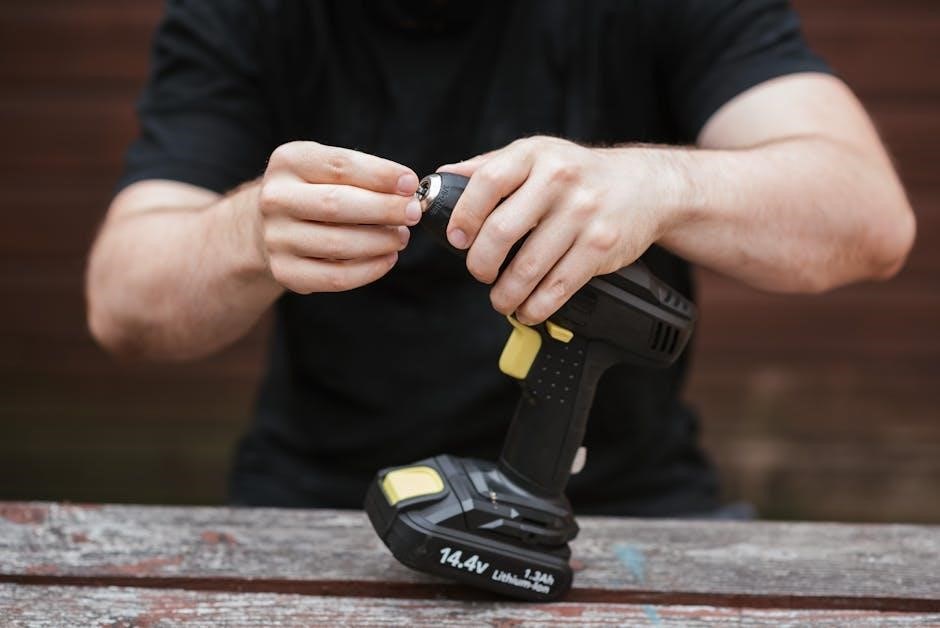
Programming and Configuration
The Delta-Q QuiQ 48 Volt Charger supports programming via a PC, enabling customization of charge profiles for specific battery types, such as flooded lead-acid, for optimal performance.
7.1 How to Program the Charger
Programming the Delta-Q QuiQ 48 Volt Charger involves using a PC-based software tool to select or customize charge profiles for specific battery types. Users can choose from pre-loaded algorithms or create tailored profiles, ensuring optimal charging for lead-acid batteries. The charger’s microprocessor stores up to 10 profiles, allowing flexibility for different applications. For models with serial numbers starting with DQCP, profiles can be selected but not reprogrammed. Newer models support full reprogramming. Detailed instructions are provided in the product manual, guiding users through the process of connecting the charger to a PC, installing software, and uploading configurations. This ensures precise control over charging parameters, enhancing efficiency and battery longevity.
7.2 Available Charge Profiles and Algorithms
The Delta-Q QuiQ 48 Volt Charger features 10 pre-loaded, optimized charge profiles designed for various lead-acid battery types, including flooded and AGM. These profiles ensure precise charging cycles, maximizing battery life and performance. Users can also customize profiles using PC-based software, tailoring parameters like voltage, current, and timing to specific battery needs. The charger supports lithium-ion batteries as well, offering versatile charging solutions. The intelligent microprocessor adapts to different chemistries, ensuring safe and efficient charging. With flexibility for multiple applications, the QuiQ charger provides a reliable and adaptable solution for industrial and electric vehicle batteries. Detailed profile descriptions and customization options are outlined in the product manual for ease of use. This feature-rich design makes it ideal for diverse electrical systems and battery types.
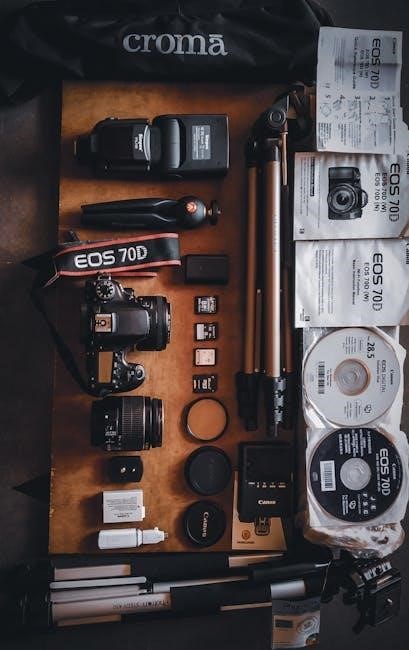
Compatibility and Integration
The Delta-Q QuiQ 48 Volt Charger seamlessly integrates with various electrical systems, supporting lead-acid and lithium-ion batteries. Its design ensures compatibility across multiple industrial applications and vehicles.
8.1 Compatible Battery Types
The Delta-Q QuiQ 48 Volt Charger is designed to work with various battery types, including lead-acid (flooded, AGM, and gel) and lithium-ion batteries. Its intelligent charging algorithms ensure optimal performance across these chemistries. The charger supports multi-cell configurations, making it suitable for both small and large battery banks. For lithium-ion batteries, it offers advanced safety features such as overvoltage protection and cell balancing. The charger’s flexibility allows it to be used in a wide range of applications, from electric vehicles to industrial equipment. Proper configuration and programming are essential to ensure compatibility and safe charging. Always refer to the product manual for specific recommendations and guidelines.
8.2 Integration with Other Electrical Systems
The Delta-Q QuiQ 48 Volt Charger is designed to seamlessly integrate with various electrical systems, offering compatibility with CAN bus communication for advanced system monitoring and control. It supports multiple charge profiles, allowing it to adapt to different power requirements and system configurations. The charger’s universal input voltage range ensures it can connect to a wide range of power sources, from 110V to 230V AC, making it versatile for global applications. Its compact design and lightweight construction facilitate easy installation in tight spaces. The charger also features power factor correction (PFC), reducing harmonic distortion and ensuring efficient energy usage. This makes it an ideal choice for integration into industrial, automotive, and renewable energy systems, where compatibility and efficiency are critical.

Warranty and Support
The Delta-Q QuiQ 48 Volt Charger is backed by a comprehensive 2-year warranty covering parts and labor. Dedicated customer support is available via telephone and email for troubleshooting and service inquiries.
9.1 Warranty Details and Coverage
The Delta-Q QuiQ 48 Volt Charger is protected by a 2-year limited warranty covering defects in materials and workmanship. This warranty period begins from the date of purchase and includes parts and labor for repairs. The warranty applies to the charger’s electrical components, excluding any damage caused by misuse, improper installation, or external factors. For detailed terms and conditions, refer to the product manual or contact Delta-Q Technologies directly. Extended warranty options may be available for purchase, offering additional coverage for up to 5 years. Proper registration of the product is recommended to ensure warranty validity.
9.2 Customer Support and Service Options
Delta-Q Technologies offers comprehensive customer support for the QuiQ 48 Volt Charger, ensuring users receive assistance whenever needed; Support options include technical assistance via phone and email, as well as an extensive online resource library featuring manuals, FAQs, and troubleshooting guides. Additionally, Delta-Q provides on-site service and repair options for defective units, ensuring minimal downtime. Customers can also access training programs to optimize charger performance and understand advanced features. For critical issues, Delta-Q’s 24/7 emergency support is available to address urgent concerns promptly. The company also offers warranty claims processing and extended service agreements to enhance support beyond the standard warranty period, ensuring long-term satisfaction and reliability.

Environmental Considerations
The Delta-Q QuiQ 48 Volt Charger is designed with energy efficiency in mind, reducing environmental impact. Proper disposal and recycling guidelines ensure eco-friendly handling of the charger at end-of-life.
10.1 Energy Efficiency and Environmental Benefits
The Delta-Q QuiQ 48 Volt Charger is engineered to maximize energy efficiency, reducing power consumption and operational costs. Its intelligent charging algorithms optimize energy use, minimizing waste and prolonging battery life. By incorporating high-frequency power conversion technology, the charger achieves high efficiency levels, contributing to lower greenhouse gas emissions. This design not only benefits users by decreasing energy bills but also supports broader environmental goals by reducing overall energy consumption. Additionally, the charger’s compact and lightweight design minimizes material usage and transportation-related emissions, further enhancing its eco-friendly profile. These features make the Delta-Q QuiQ 48 Volt Charger an environmentally responsible choice for battery charging needs.
10.2 Proper Disposal and Recycling Guidelines
Proper disposal and recycling of the Delta-Q QuiQ 48 Volt Charger are crucial to minimize environmental impact. The charger contains electronic components and metals that require specialized handling. Users should recycle the charger through authorized electronic waste recycling facilities to ensure safe processing of hazardous materials. Before disposal, disconnect the charger from power sources and remove any batteries. Do not dispose of the charger in regular trash, as it may release harmful substances. Always comply with local, state, and federal regulations regarding electronic waste disposal. Recycling helps conserve resources, reduces landfill waste, and protects the environment. For detailed guidelines, consult the manufacturer’s recommendations or contact local recycling centers.
The Delta-Q QuiQ 48 Volt Charger is a reliable, efficient solution for lead-acid batteries. For more details, refer to the product manual or contact Delta-Q support.
11.1 Summary of Key Points
The Delta-Q QuiQ 48 Volt Charger is a high-performance, programmable charger designed for lead-acid batteries, offering efficient charging with optimized algorithms. It features a compact design, high reliability, and compatibility with various applications. Safety is prioritized with multiple protection mechanisms, ensuring safe operation. The charger supports a wide range of voltages and is suitable for industrial and electric vehicle applications. Regular maintenance, such as checking connections and battery water levels, is recommended for optimal performance. Users can refer to the product manual for detailed specifications, installation, and troubleshooting guides. For additional support, Delta-Q provides comprehensive customer service and resources.
11.2 Where to Find More Information
For additional details about the Delta-Q QuiQ 48 Volt Charger, visit the official Delta-Q Technologies website, where you can access product manuals, datasheets, and FAQs. The QuiQ Series Installation & Troubleshooting Manual provides in-depth guidance on safety, specifications, and maintenance. Online forums and technical communities also offer user discussions and shared experiences. Authorized distributors and retailers may provide supplementary resources or direct support. For personalized assistance, contact Delta-Q’s customer support directly. Ensure to refer to the official documentation for the most accurate and up-to-date information.